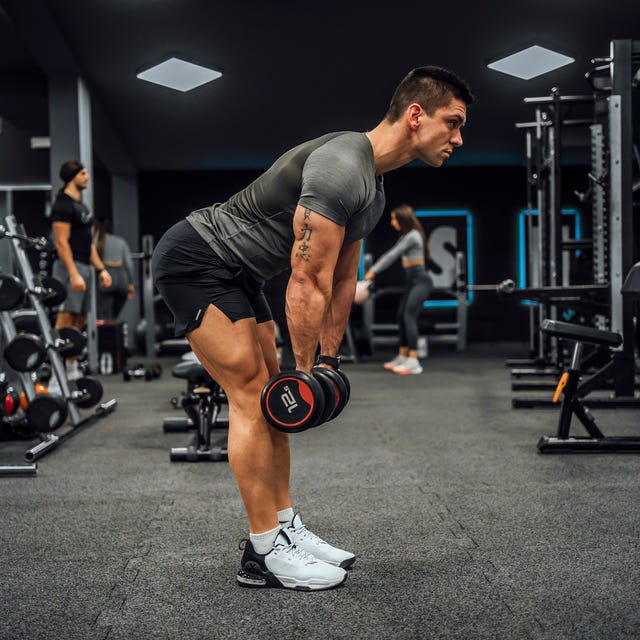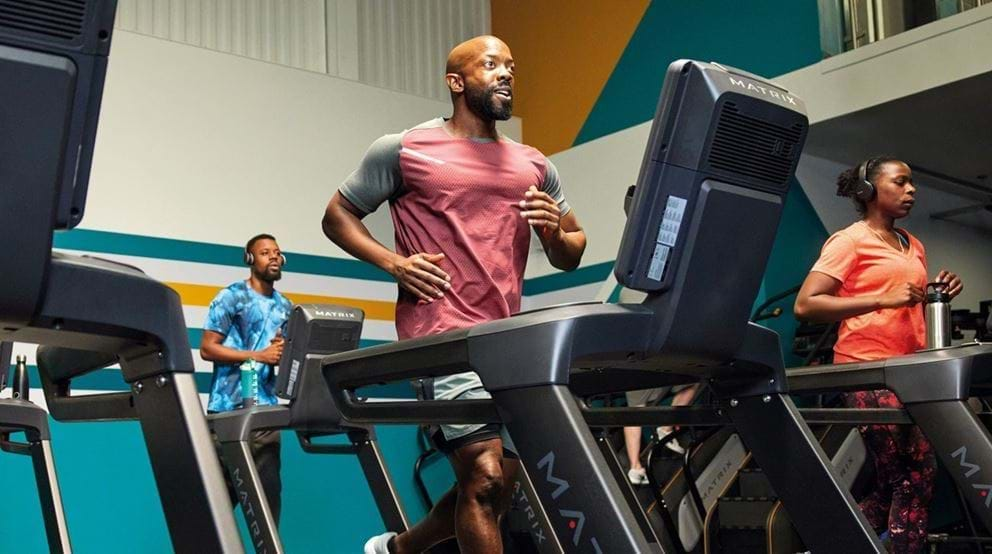Improving fitness for cardio is essential for enhancing your heart health, boosting energy levels, and supporting long-term well-being. Whether you’re just starting your fitness journey or aiming to take your endurance to the next level, cardio exercises are the foundation of a healthy lifestyle. In this guide, we’ll walk you through the best cardio exercises for different fitness levels, and provide tips on how to gradually increase intensity to improve cardiovascular fitness.
What Does It Mean to Improve Fitness for Cardio?
To improve fitness for cardio means increasing the efficiency of your heart, lungs, and muscles so that they can work together more effectively during physical activities. Regular cardio workouts help strengthen your cardiovascular system, boost your endurance, and enhance your overall health.
Improved cardiovascular fitness makes day-to-day activities feel easier, helps regulate blood pressure, and reduces the risk of chronic diseases such as heart disease, diabetes, and obesity.
Best Cardio Exercises for Beginners
When you’re new to cardio exercises, it’s crucial to start with low-impact activities that allow your body to adjust to the demands of aerobic exercise. Here are some of the best beginner-friendly options:
Brisk Walking
Walking is one of the simplest and most accessible cardio exercises. It’s easy on the joints, requires no special equipment, and can be done almost anywhere. Starting with brisk walking for 20-30 minutes 3-4 times a week is an excellent way to improve fitness for cardio.
Cycling
Cycling, whether on a stationary bike or outdoors, provides a great cardiovascular workout while minimizing strain on the joints. Begin with short sessions of 20-30 minutes and gradually increase the intensity as your fitness improves.
Swimming
Swimming is another low-impact exercise that is ideal for beginners. It provides a full-body workout and improves cardiovascular fitness without stressing the joints. Start with a few laps at a comfortable pace and work your way up as your stamina increases.
How to Start a Cardio Routine if You’re Unfit
Starting a cardio routine when you’re unfit can seem intimidating, but taking small steps will help you build a strong foundation and improve fitness for cardio over time. Here’s how to begin:
Start Small and Gradual
If you haven’t been active for a while, begin with 10-15 minute sessions of light activity. Walking, gentle cycling, or swimming are great options to ease into cardio workouts. It’s important to progress at your own pace to avoid injury and burnout.
Focus on Consistency
The key to improving fitness for cardio is consistency. Try to schedule regular cardio workouts into your weekly routine, even if it’s just for a short period of time. Gradually increasing the duration of your sessions will help you build endurance over time.
Listen to Your Body
Pay attention to how your body responds to exercise. If you feel fatigued or experience any discomfort, it’s okay to take a break. Rest is as important as exercise when it comes to improving cardio fitness.

The Difference Between Steady-State Cardio and Interval Training
When it comes to improving fitness for cardio, you may come across two primary types of training: steady-state cardio and interval training. Understanding the difference between them will help you choose the right workout for your goals.
Steady-State Cardio
Steady-state cardio involves performing an exercise at a consistent pace for an extended period of time. Examples include jogging, cycling at a moderate pace, or swimming at a steady rhythm. This type of cardio helps build endurance and is ideal for beginners.
Interval Training
Interval training (or High-Intensity Interval Training – HIIT) involves alternating between short bursts of intense activity and recovery periods. For example, you might sprint for 30 seconds, then walk for 1 minute before repeating. Interval training improves cardiovascular fitness quickly and helps increase metabolism. However, it’s more suitable for intermediate to advanced fitness levels.
How Much Cardio Should You Do to Improve Fitness for Cardio?
To improve fitness for cardio, you should aim for a specific amount of exercise each week. The amount varies depending on your fitness goals, but general guidelines are:
For Beginners
If you’re just starting, aim for at least 150 minutes of moderate-intensity cardio per week. This could be spread out over five days with 30-minute sessions.
For Weight Loss or More Advanced Goals
If you’re looking to lose weight or improve cardiovascular endurance, increase your cardio time to 300 minutes of moderate-intensity exercise per week. Alternatively, you can do 150 minutes of high-intensity cardio, such as interval training.
For Health Maintenance
If you’re simply aiming to maintain your current fitness level, try to get at least 150 minutes of moderate-intensity cardio each week.
Can Cardio Help You Lose Weight?
While cardio is essential for improving fitness for cardio, it’s also effective for weight loss. Cardio exercises burn calories and promote fat loss. However, to maximize weight loss, you should combine cardio with a balanced diet and strength training. Strength training builds muscle, which in turn boosts your metabolism and helps you burn more calories even when you’re not exercising.
If your primary goal is weight loss, high-intensity interval training (HIIT) is one of the most efficient forms of cardio, as it burns fat in a shorter amount of time compared to steady-state exercises.
Low-Impact Cardio Options for Beginners
Low-impact cardio exercises are ideal for those who are just starting out or those with joint issues. These exercises allow you to improve fitness for cardio without putting undue stress on your body.
Walking
Walking is the ultimate low-impact cardio exercise. It’s easy, effective, and doesn’t require any special equipment. You can adjust your pace and duration as needed to suit your fitness level.
Cycling
Cycling is gentle on the joints and provides an excellent cardio workout. You can adjust the intensity based on your fitness level, making it suitable for beginners.
Swimming
Swimming is one of the best low-impact exercises. The water provides resistance while supporting your body, making it a great option for anyone with joint pain or mobility issues.
Elliptical Trainer
Using an elliptical machine is another excellent low-impact cardio exercise. It mimics the motion of running but without the jarring impact on your joints.
How to Know When to Increase Intensity in Your Workouts
As you improve fitness for cardio, your body will adapt to your current routine. To continue making progress, you need to increase the intensity of your workouts gradually. Here are some signs that it’s time to level up:
When You Feel Comfortable
If you find that you can easily complete your workouts without feeling challenged, it’s time to increase the intensity.
Gradual Progression
Don’t rush into higher intensity workouts. Increase the duration, intensity, or frequency by 10% per week to avoid overtraining.
Track Your Heart Rate
Monitor your heart rate to ensure you’re working at the right intensity. A good target heart rate for moderate-intensity exercise is 50-70% of your maximum heart rate, while 70-85% is ideal for high-intensity exercise.
Is Brisk Walking Enough for Heart Health?
Brisk walking is excellent for improving fitness for cardio and maintaining heart health. It’s a low-impact, moderate-intensity exercise that improves circulation, lowers blood pressure, and strengthens the heart. However, if you’re looking for more significant fitness improvements or weight loss, consider incorporating other forms of cardio like cycling or interval training into your routine.
What Equipment Do You Need for At-Home Cardio Workouts?
At-home cardio workouts are convenient and can be highly effective. Here are a few pieces of equipment to consider:
Comfortable Clothing and Shoes
Invest in comfortable workout clothes and shoes to ensure you can move freely and avoid injury during your cardio workouts.
Jump Rope
A jump rope is a simple and inexpensive piece of equipment that provides an excellent cardio workout. It’s perfect for improving cardiovascular endurance and coordination.
Resistance Bands
While resistance bands aren’t strictly for cardio, they can be used to enhance your workout by adding strength exercises to your routine, which helps boost overall fitness.
Stationary Bike or Treadmill
A stationary bike or treadmill can provide a great cardio workout at home, especially if you prefer indoor exercise. They allow you to adjust intensity and duration based on your goals.
How to Make Cardio More Fun and Motivating
Staying motivated to improve fitness for cardio can sometimes be a challenge. Here are a few ways to make cardio workouts more enjoyable:
Listen to Music or Podcasts
Create a playlist of your favorite songs or listen to an interesting podcast while you work out. This will help make the time go by faster.
Join a Class or Group
Joining a group fitness class or finding a workout buddy can add a social element to your cardio workouts, making them more fun and motivating.
Mix Up Your Routine
Try different forms of cardio to keep things interesting. You can switch between walking, cycling, swimming, and high-intensity interval training (HIIT) to prevent boredom and keep challenging your body.
FAQs
1. How do I start cardio if I’ve been sedentary?
Start with light activities like walking or cycling. Begin with short, manageable sessions and gradually increase the duration and intensity.
2. Can I do cardio every day?
Yes, light cardio like walking can be done daily. For higher-intensity cardio, aim for 3-5 sessions a week to avoid overtraining.
3. How do I track my progress in cardio fitness?
Track your heart rate, the duration of your workouts, and how you feel during exercise. Fitness trackers and apps can help you monitor improvements.
4. What’s the best cardio for fat loss?
High-intensity interval training (HIIT) is highly effective for fat loss as it burns more calories in a shorter period of time and increases metabolism.
